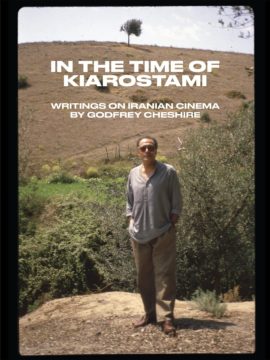George Soros and others at Project Syndicate:
 Rapid progress in the development of artificial intelligence has been too rapid for many, including pioneers of the technology, who are now issuing dire warnings about the future of our economies, democracies, and humanity itself. But AI is hardly the first technological advance that has been portrayed as an existential threat.
Rapid progress in the development of artificial intelligence has been too rapid for many, including pioneers of the technology, who are now issuing dire warnings about the future of our economies, democracies, and humanity itself. But AI is hardly the first technological advance that has been portrayed as an existential threat.
George Soros, Chairman of Soros Fund Management and the Open Society Foundations, thinks that AI is different. Not only is it “impossible for ordinary human intelligence” fully to comprehend AI; the technology will be virtually impossible to regulate. Powerful incentives to cheat mean that regulations would have to be “globally enforceable” – an “unattainable” goal at a time of conflict between “open” and “closed” societies.
More here.

 So are we really essentially the same animals as the early Homo sapiens hunting and gathering on the savannahs? Dartnell thinks so. “The fundamental aspects of what it means to be human – the hardware of our bodies and the software of our minds – haven’t changed.” This is, indeed, the assumption behind evolutionary psychology, which seeks to explain modern human behaviour in terms of what is hypothesised to have been adaptive for our cave-dwelling ancestors. But his mainframe-age metaphor of hardware and software is old hat and inaccurate. We now know that the human brain exhibits substantial neuroplasticity: in other words, the “software” can change the “hardware” it’s running on, as is not the case for any actual computer.
So are we really essentially the same animals as the early Homo sapiens hunting and gathering on the savannahs? Dartnell thinks so. “The fundamental aspects of what it means to be human – the hardware of our bodies and the software of our minds – haven’t changed.” This is, indeed, the assumption behind evolutionary psychology, which seeks to explain modern human behaviour in terms of what is hypothesised to have been adaptive for our cave-dwelling ancestors. But his mainframe-age metaphor of hardware and software is old hat and inaccurate. We now know that the human brain exhibits substantial neuroplasticity: in other words, the “software” can change the “hardware” it’s running on, as is not the case for any actual computer. No, it’s not. Participants in our studies tell us that people are less kind, less nice, less honest, less good, that this has been happening their whole lives, that it’s been happening recently, and that it’s been happening everywhere. Which should make it pretty easy to find some evidence of this somewhere, and we find no evidence of it anywhere. In fact, we find pretty good evidence that it
No, it’s not. Participants in our studies tell us that people are less kind, less nice, less honest, less good, that this has been happening their whole lives, that it’s been happening recently, and that it’s been happening everywhere. Which should make it pretty easy to find some evidence of this somewhere, and we find no evidence of it anywhere. In fact, we find pretty good evidence that it  Dear Reader,
Dear Reader, The actor, 90, has long harboured the desire to write a thriller, and was inspired to do so by a news item, says his UK publisher, Hodder’s Rowena Webb, about “the discovery of uranium by workers on a dump in London’s East End”. The novel’s lead character is DCI Harry Taylor, who, according to the synopsis, is “called in when just such a package is found, mysteriously abandoned in Stepney and stolen before the police can reclaim it. As security agencies around the world go to red alert, it is former SAS man Harry and his small team from the Met who must race against time to find who has the nuclear material and what they plan to do with it.”
The actor, 90, has long harboured the desire to write a thriller, and was inspired to do so by a news item, says his UK publisher, Hodder’s Rowena Webb, about “the discovery of uranium by workers on a dump in London’s East End”. The novel’s lead character is DCI Harry Taylor, who, according to the synopsis, is “called in when just such a package is found, mysteriously abandoned in Stepney and stolen before the police can reclaim it. As security agencies around the world go to red alert, it is former SAS man Harry and his small team from the Met who must race against time to find who has the nuclear material and what they plan to do with it.” From the absurdist Terry-Gilliam-style cover to the provocative subtitle to my enjoyment of his previous book
From the absurdist Terry-Gilliam-style cover to the provocative subtitle to my enjoyment of his previous book  Cormac McCarthy
Cormac McCarthy Travelers to Unimaginable Lands is that rarity: true biblio-therapy. Lucid, mature, wise, with hardly a wasted word, it not only deepens our understanding of what transpires as we care for a loved one with Alzheimer’s, it also has the potential to be powerfully therapeutic, offering the kind of support and reorientation so essential to the millions of people struggling with the long, often agonizing leave-taking of loved ones stricken with the dreaded disease. The book is based on a profound insight: the concept of “dementia blindness,” which identifies a singular problem of caring for people with dementia disorders—one that has generally escaped notice but, once understood, may make a significant difference for many caregivers.
Travelers to Unimaginable Lands is that rarity: true biblio-therapy. Lucid, mature, wise, with hardly a wasted word, it not only deepens our understanding of what transpires as we care for a loved one with Alzheimer’s, it also has the potential to be powerfully therapeutic, offering the kind of support and reorientation so essential to the millions of people struggling with the long, often agonizing leave-taking of loved ones stricken with the dreaded disease. The book is based on a profound insight: the concept of “dementia blindness,” which identifies a singular problem of caring for people with dementia disorders—one that has generally escaped notice but, once understood, may make a significant difference for many caregivers. In theory, a fundamentalist religious dictatorship should not be a hospitable environment for an extraordinary artistic flowering whose treasures continue—four decades later—to please, confound, and reinvent themselves to audiences around the world. Yet this seems to be exactly the case with Iran’s cinematic output since 1979, when Ayatollah Ruhollah Khomeini and his followers consolidated power in the wake of the Shah’s departure. (The Shah was himself a tyrant, but of the kind who sought to project a modern and art-friendly image.) We are all familiar with artists, writers, and filmmakers circumventing official and de facto censors to produce subversive masterpieces. But the consistency of Iranian cinema’s march across the world stage over the last 30-plus years suggests that something more powerful than individual creativity is at play—rather, a kind of relentless cultural force inexorably punching through whatever obstacles an authoritarian government places in its way.
In theory, a fundamentalist religious dictatorship should not be a hospitable environment for an extraordinary artistic flowering whose treasures continue—four decades later—to please, confound, and reinvent themselves to audiences around the world. Yet this seems to be exactly the case with Iran’s cinematic output since 1979, when Ayatollah Ruhollah Khomeini and his followers consolidated power in the wake of the Shah’s departure. (The Shah was himself a tyrant, but of the kind who sought to project a modern and art-friendly image.) We are all familiar with artists, writers, and filmmakers circumventing official and de facto censors to produce subversive masterpieces. But the consistency of Iranian cinema’s march across the world stage over the last 30-plus years suggests that something more powerful than individual creativity is at play—rather, a kind of relentless cultural force inexorably punching through whatever obstacles an authoritarian government places in its way. After years of official pronouncements to the contrary, significant new evidence has emerged that strengthens the case that the SARS-CoV-2 virus accidentally escaped from the Wuhan Institute of Virology (WIV).
After years of official pronouncements to the contrary, significant new evidence has emerged that strengthens the case that the SARS-CoV-2 virus accidentally escaped from the Wuhan Institute of Virology (WIV). Few people would mistake a wolf for a dog. But if you saw the ancestor of the domestic cat in your backyard, your first thought would likely be “What a cool-looking housecat!” rather than “What’s an African wildcat doing in Manchester?” That’s how little they’ve changed, earning them the tag “barely” or “semi-domesticated”. There have been some minor anatomical shifts – domestic cats have longer intestines and smaller brains, for example – but very few genetic ones (and certainly many fewer than separate dogs from their wild ancestors). What about behaviour, then? Which of the traits we commonly associate with our furry friends are the result of domestication, and which do they share with their wild relatives?
Few people would mistake a wolf for a dog. But if you saw the ancestor of the domestic cat in your backyard, your first thought would likely be “What a cool-looking housecat!” rather than “What’s an African wildcat doing in Manchester?” That’s how little they’ve changed, earning them the tag “barely” or “semi-domesticated”. There have been some minor anatomical shifts – domestic cats have longer intestines and smaller brains, for example – but very few genetic ones (and certainly many fewer than separate dogs from their wild ancestors). What about behaviour, then? Which of the traits we commonly associate with our furry friends are the result of domestication, and which do they share with their wild relatives? Did you watch the finale of “Succession” on HBO this week? If so, did the final shot of Tom and Shiv in their car make you think of “
Did you watch the finale of “Succession” on HBO this week? If so, did the final shot of Tom and Shiv in their car make you think of “ S
S